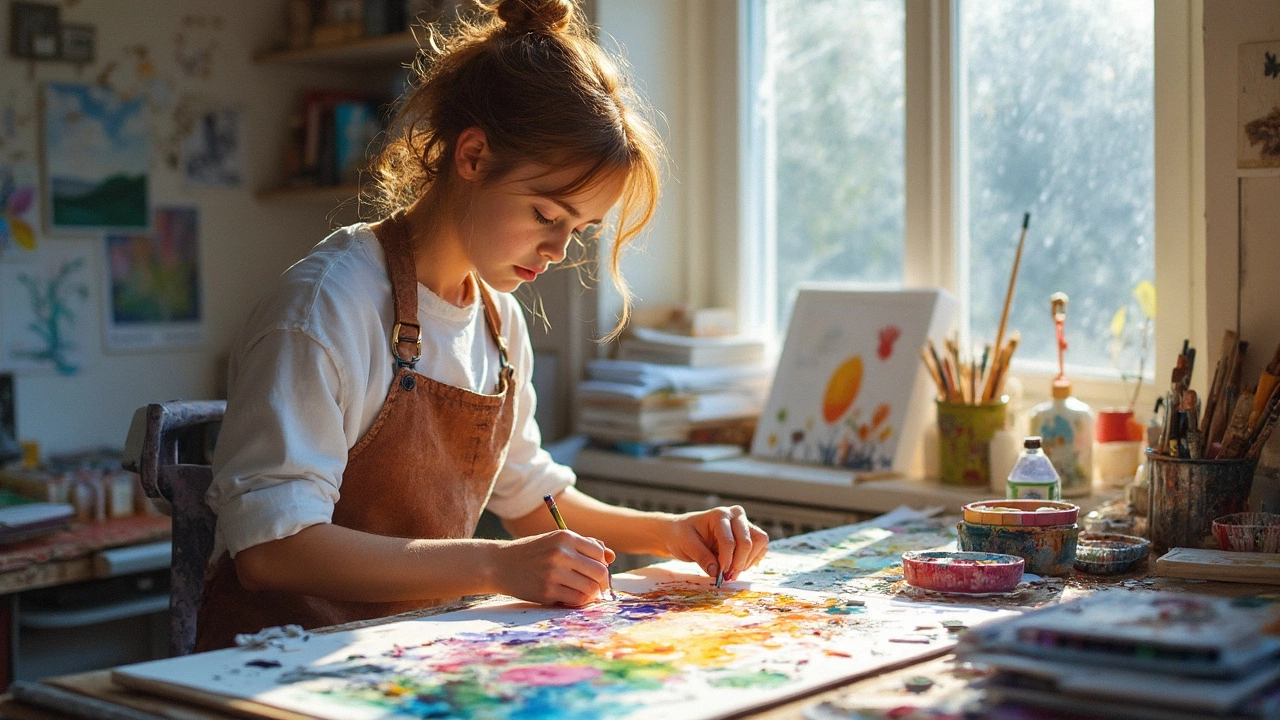Watercolor Paintings: Guides, Ideas and Tips for Every Artist
Whether you’re splashing colour on a fresh sheet for the first time or you’ve been layering washes for years, watercolor has its own rhythm. The magic lies in the way pigment moves with water, but that also means a tiny mistake can spread fast. Below you’ll find simple, down‑to‑earth advice that lets you control the flow, get the most out of your supplies and keep the fun alive.
Start Smart: Sketching or Jumping Right In?
One big debate among watercolorists is whether you should sketch first. Sketching gives you a roadmap, especially for detailed subjects, but it can also add extra lines that get lost in the wash. If you love a loose look, try a light pencil or a water‑soluble pen and erase once the paint settles. For tight control – think portrait or architectural work – a faint graphite sketch helps you keep proportions right without interfering with colour.
What to Paint First: Light Washes and Layering
Most pros agree the first step is a light wash. Begin with the lightest colour you plan to use and work from top to bottom. This prevents paint from pooling and keeps the paper from buckling. After the initial wash dries, add darker tones in layers, letting each dry before you move on. The "wet‑on‑wet" technique can create soft blends, while "wet‑on‑dry" gives you sharp edges. Experiment with both to see which works best for the subject you’re tackling.
Another handy tip is to keep a small cup of clean water handy and dab your brush on a paper towel frequently. Too much water makes the pigment run, too little makes it look chalky. If you find a spot too light, go back with a slightly deeper tone – watercolor is forgiving when you work in layers.
Materials matter, too. A good-quality 140lb (300gsm) paper absorbs water evenly, reducing unwanted streaks. Stay away from cheap pads that curl or feather. For brushes, a round synthetic tip gives you control for detail, while a flat brush is perfect for broad washes.
Finally, don’t forget to look at real examples. Articles like “Do You Sketch Before Watercolor?” and “What to Paint First in Watercolor” dive deeper into each step, sharing stories from artists who tried both approaches. Take their insights, test a few ideas, and soon you’ll develop a workflow that feels natural.
Watercolor painting is all about experiment and observation. Pick a simple subject – a leaf, a cup, a sunrise – and apply the steps above. As you get comfortable, add more complex scenes and play with colour mixing. The more you practice, the quicker you’ll see the medium’s unique beauty unfold.

13 Feb 2025
Watercolor painting, while a popular medium for its subtlety and flexibility, comes with its own set of challenges. Artists often find watercolor tricky due to its unpredictability and the lack of control compared to other mediums. Traditional techniques might lead to unexpected mishaps, adding a layer of complexity to the creative process. Exploring these weaknesses can help artists better anticipate and manage the medium's quirks. With practical tips, artists can enhance their watercolor skills and tackle its unique challenges head-on.
Continue reading...
